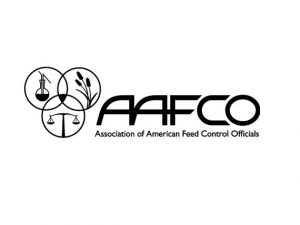Choosing a Pet Food – Where Do I Start?

How Do I Choose The Best Food For My Pet?!
Walking into a store to choose a pet food for your dog or cat can at times be overwhelming because of the wide variety of brands and options. Feeding a high-quality, well-balanced diet is one of the best things that you as a pet owner can do for the health and well-being of your pet. The right food will help keep your pet’s coat shiny, strengthen their immune system, and keep his digestive system in good health. If your pet has any health concerns, please contact your veterinarian at Dupont Veterinary Clinic for advice on what diet would be most appropriate for your pet. We hope to help you sift through all of the brands and advertising to find the perfect food for your loved one.
What do I look for?
Knowing what ingredients make up the best dog food is a key first step before selecting a diet. The Association of American Feed Control Officials (AAFCO) has created guidelines for regulators to manage claims a pet food company can make on its label. Looking for the AAFCO label on a pet food brand certifies that the pet food has followed regulations and has to exceed certain expectations prior to being packaged and being put on a shelf. Ensuring that the food you are feeding is complete and balanced for a particular life stage, such as puppy, adult maintenance, or mature senior, is also important because this indicates that your pet is getting more of the ingredients vital for their stage of life.
What’s in a name?
Under AAFCO guidelines, if a food is labeled to contain a single ingredient it must contain at least 95% of that ingredient, excluding water. If the food advertises a combination of ingredients, that combination has to make up at least 95% of that food. For example, if that food claims to include only chicken, then under AAFCO guidelines chicken must make up 95% of the food. Under AAFCO guidelines a food label containing the words dinner, platter, or entrée means that the food must contain 25% of the named ingredient. If the name states “with” a specific ingredient, such as “with rice,” only 3% of the named ingredient is required. In addition if a product is advertised to contain specific “flavors” the food only needs to contain a detectable amount of the ingredient.
Reading the food label
Deciphering a pet food label can be almost as confusing as picking the appropriate food off of the shelf! Look at the list of ingredients and keep in mind that the ingredients are listed by weight. Ingredients that contain a lot of moisture, such as beef, poultry, chicken, or fish, are more likely to be at the top of the list. Nutrients that are further down the list may be just as important; however, they may weigh less because the water has been removed for a dry pet food.
Is grain or gluten bad for my pet?
Unless your pet has been diagnosed with a food allergy, these ingredients do not need to be avoided. Grains are contained in numerous pet foods and are an excellent source of carbohydrates. Grains are easily digested and used as an energy source. Some pets are allergic to grains; however, allergies to meats (protein) are much more common than to grains. Gluten allergies in people are fairly common and is known as Celiac’s disease, fortunately, gluten allergies are very rare in dogs. There are a very select few Irish Setters or Soft Coated Wheaten Terriers that are sensitive to gluten, luckily these cases are very few and far between.
Ask your vet’s advice
We hope this article helps you to sift through all of the different brands of pet food and gives you a better understanding of what to look for in a food for your pet. If you are unsure of how to decipher a pet food label or if you are uncertain if a pet food is appropriate for your pet, call Dupont Veterinary Clinic at 260-637-7676 to speak with your veterinarian. We want to help you choose the best food possible for your pets so they can live a long, happy, and healthy life.
By Dr. Ashley Dawes



